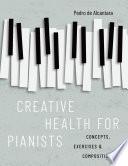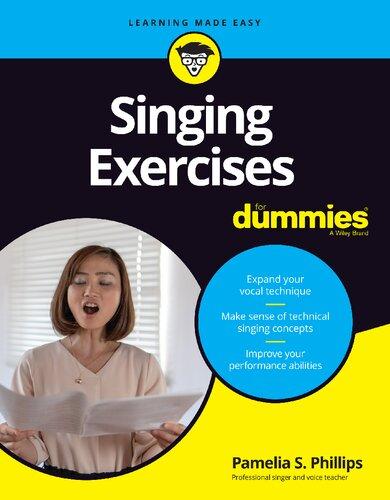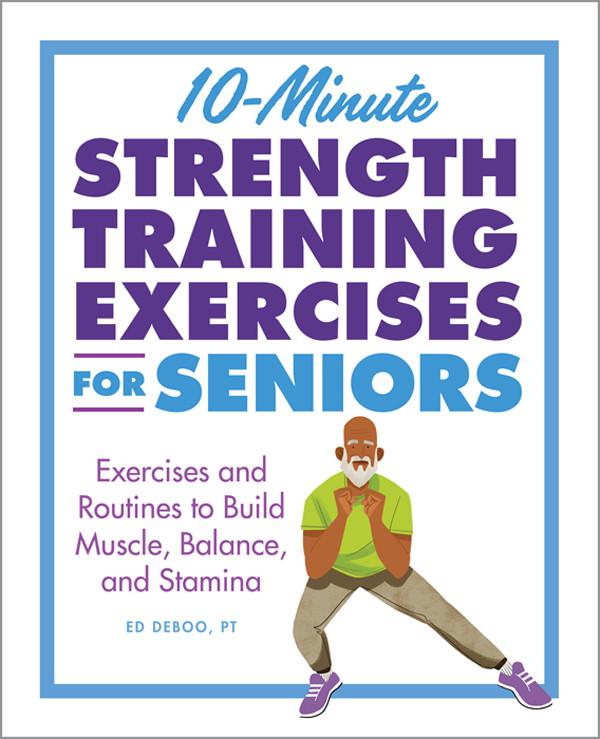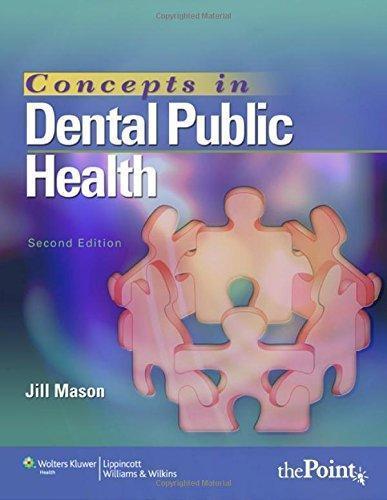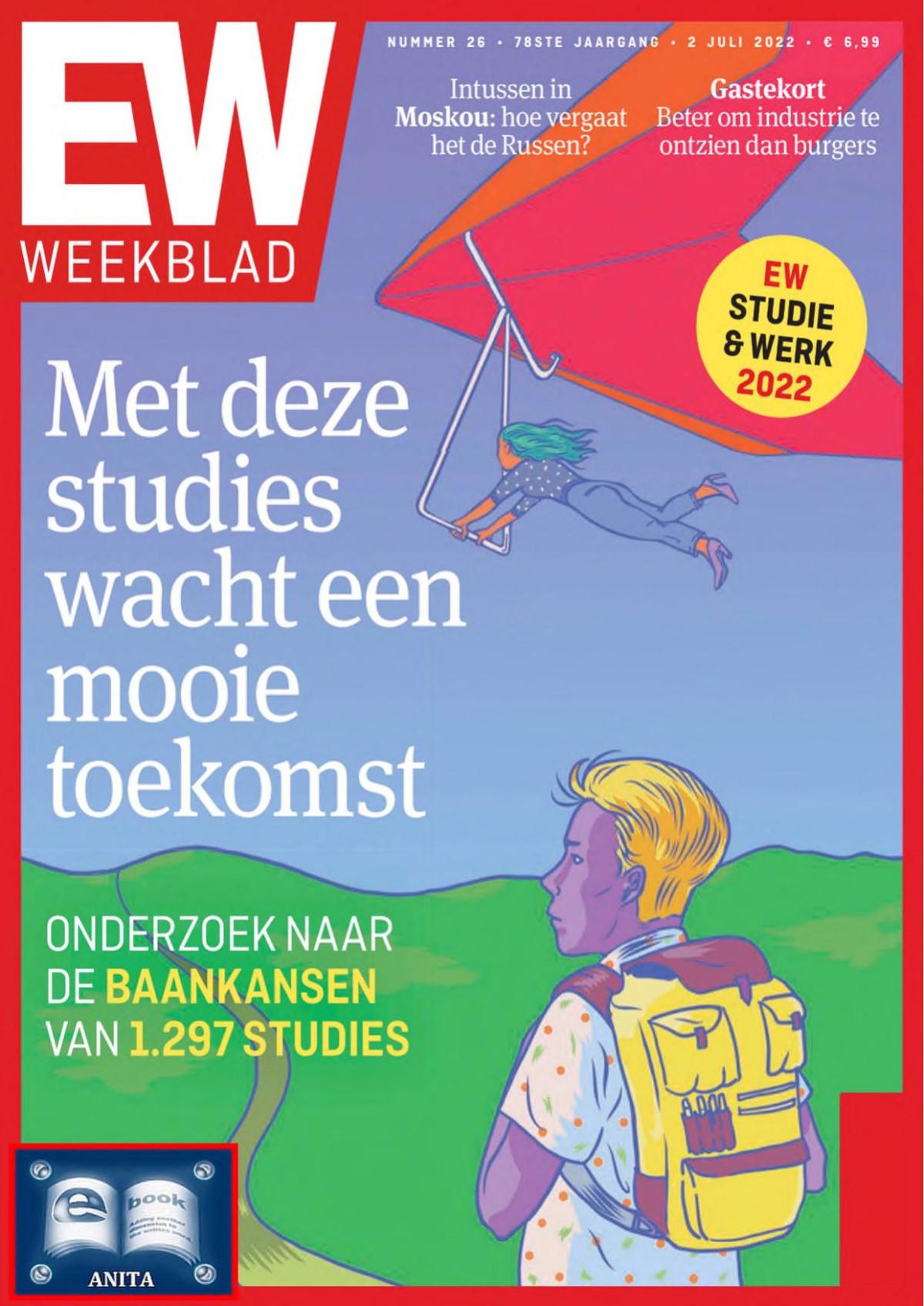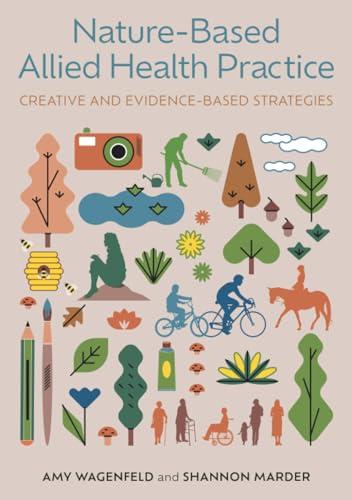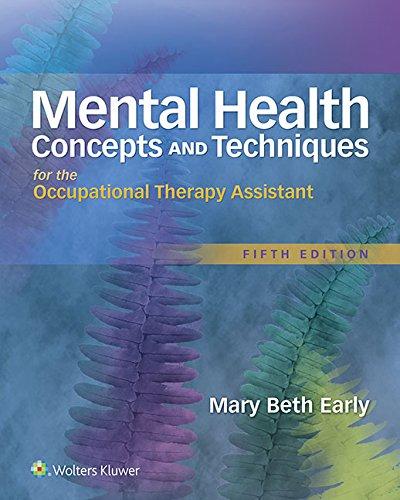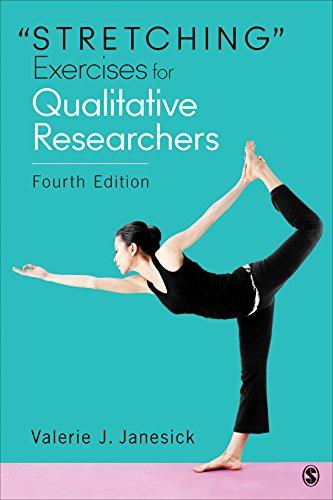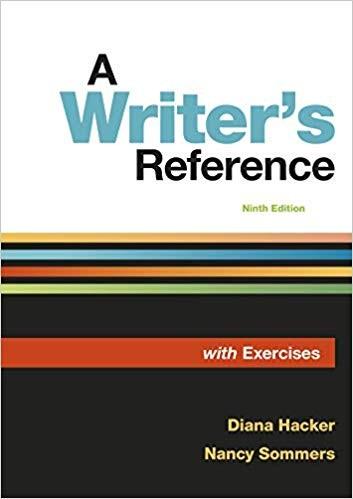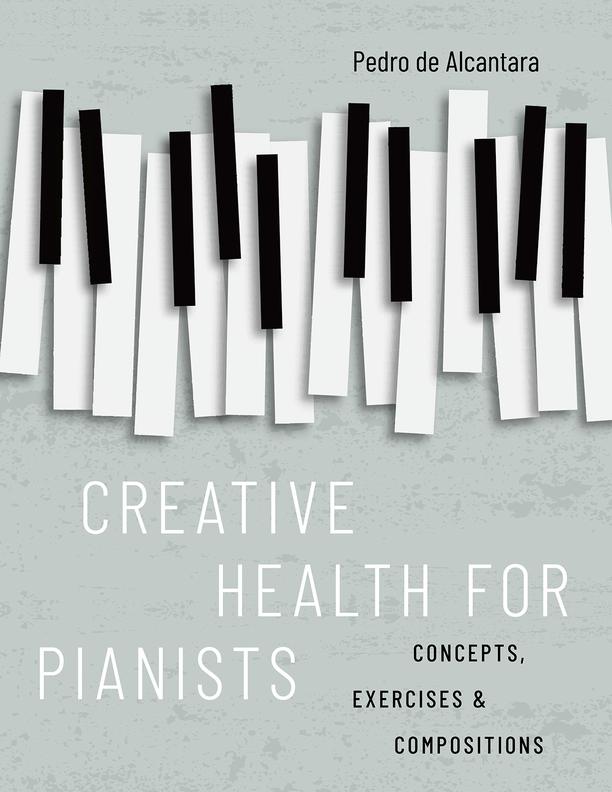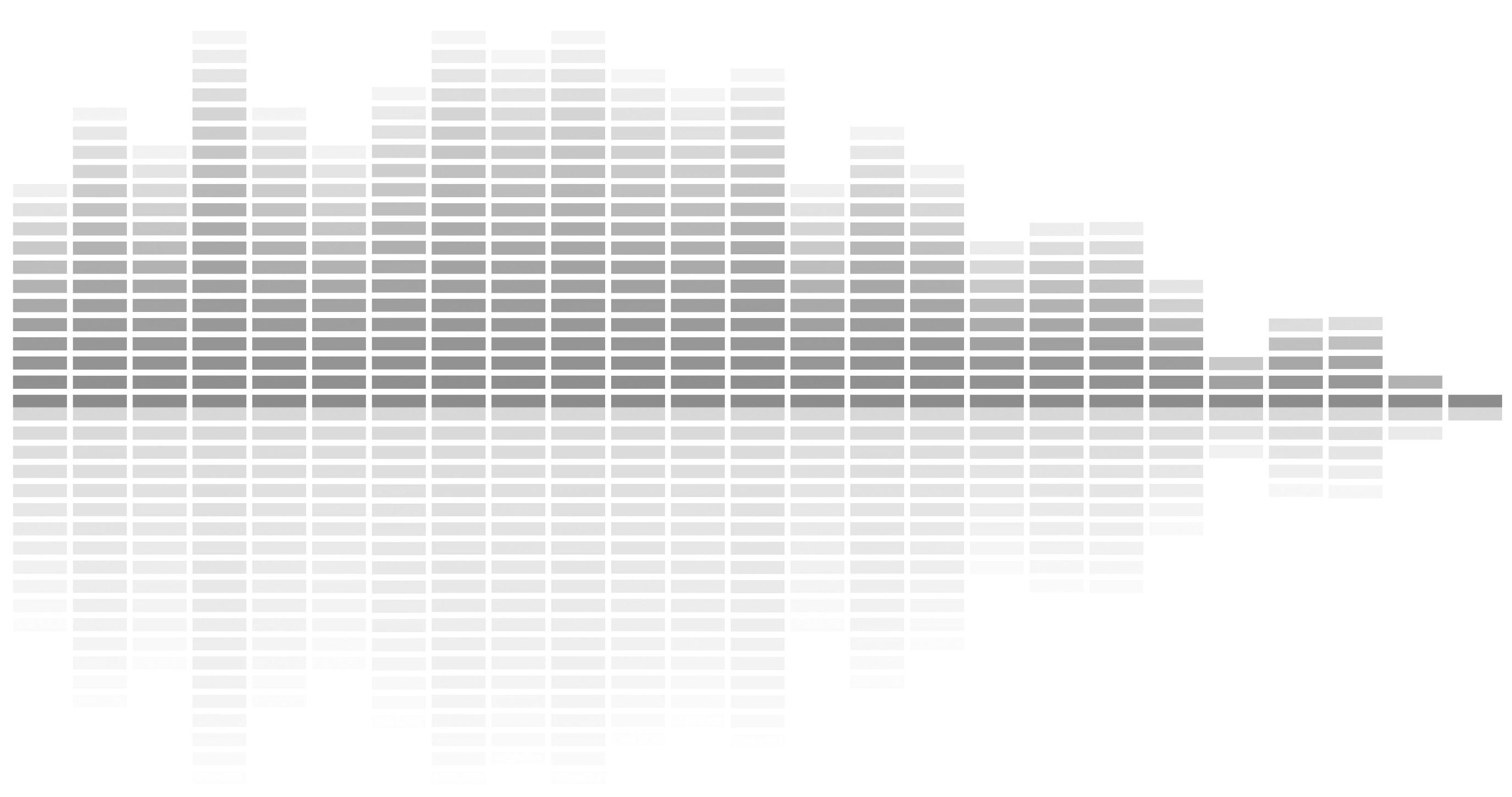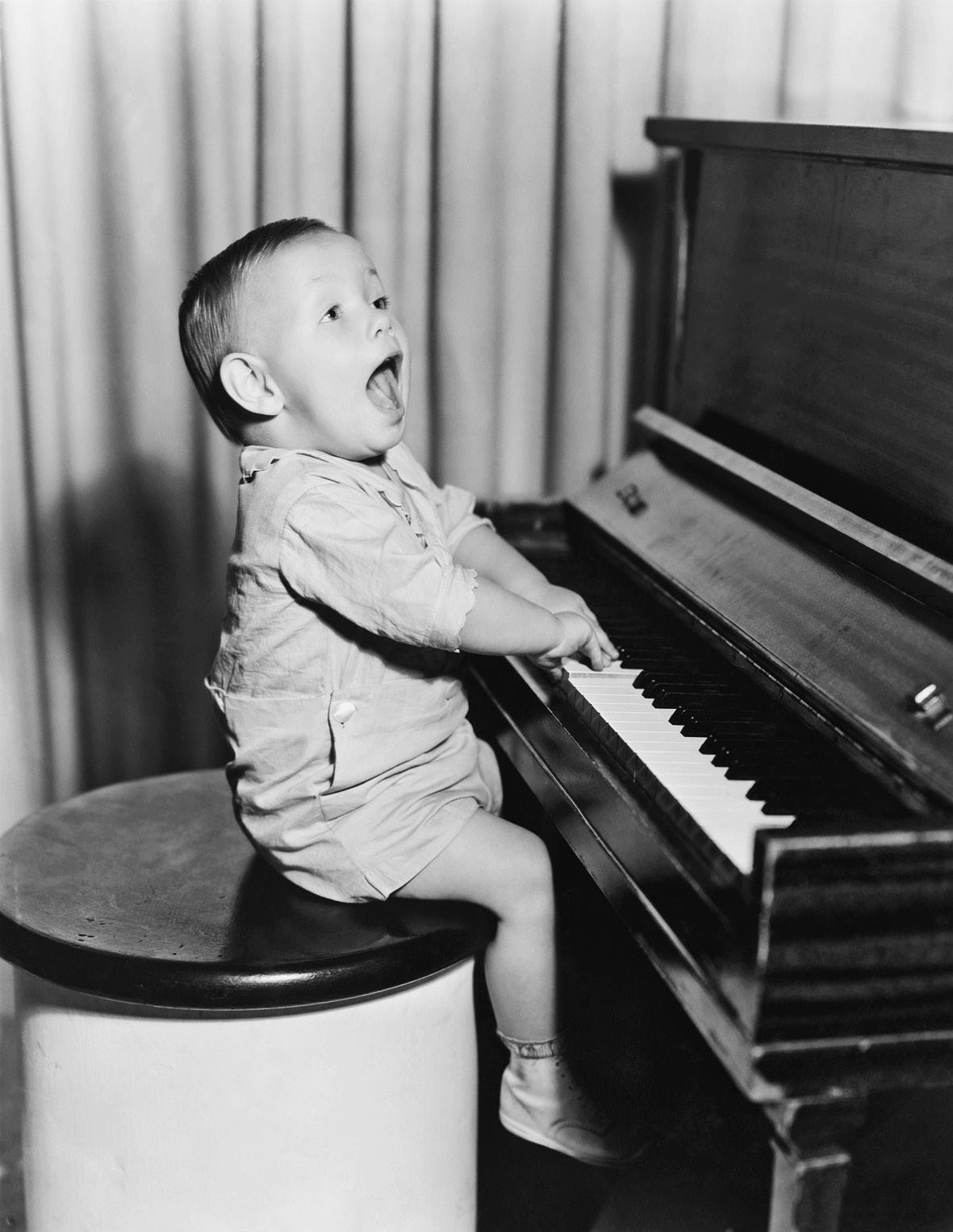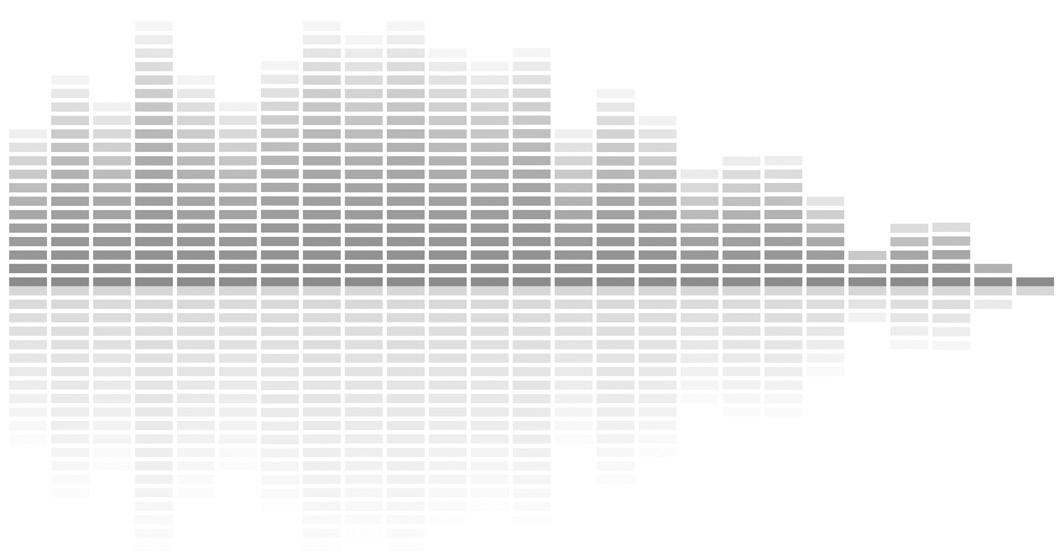Creative Health for Pianists
CONCEPTS, EXERCISES & COMPOSITIONS
Pedro de Alcantara
Oxford University Press is a department of the University of Oxford. It furthers the University’s objective of excellence in research, scholarship, and education by publishing worldwide. Oxford is a registered trade mark of Oxford University Press in the UK and certain other countries.
Published in the United States of America by Oxford University Press 198 Madison Avenue, New York, NY 10016, United States of America.
© Oxford University Press 2023
All rights reserved. No part of this publication may be reproduced, stored in a retrieval system, or transmited, in any form or by any means, without the prior permission in writing of Oxford University Press, or as expressly permited by law, by license, or under terms agreed with the appropriate reproduction rights organization. Inquiries concerning reproduction outside the scope of the above should be sent to the Rights Department, Oxford University Press, at the address above.
You must not circulate this work in any other form and you must impose this same condition on any acquirer.
Library of Congress Cataloging-in-Publication Data
Names: Alcantara, Pedro de, 1958– author.
Title: Creative health for pianists : concepts, exercises & compositions / Pedro de Alcantara. Description: New York : Oxford University Press, 2023. | Includes bibliographical references and index.
Identifers: LCCN 2022053637 (print) | LCCN 2022053638 (ebook) | ISBN 9780197600214 (paperback) | ISBN 9780197600207 (hardback) | ISBN 9780197600238 (epub)
Subjects: LCSH: Piano—Methods.
Classifcation: LCC MT222 A47 2023 (print) | LCC MT222 (ebook) | DDC 786.2/193—dc23/eng/20221103
LC record available at htps://lccn.loc.gov/2022053637
LC ebook record available at htps://lccn.loc.gov/2022053638
DOI: 10.1093/oso/9780197600207.001.0001
Paperback printed by Sheridan Books, Inc., United States of America
Hardback printed by Bridgeport National Bindery, Inc., United States of America
To Alexandre Mion
List of Figures • ix
List
Preface • xiii
Acknowledgments • xxi
Appendix: Practicing the Circle of Fifths •
Resources
Figures
Preface
Figure 0.1 Discovery x ix
Chapter 3
Figure 3.1 Bouncing 95
Figure 3.2 Bouncing, too 95
Chapter 4
Figure 4.1 Struggle 108
Figure 4.2 Gradations 109
Figure 4.3 Oscillations 111
Chapter 5
Figure 5.1 Te circle of ffhs 149
Figure 5.2 Te manifold circle of ffhs 151
Figure 5.3 Te cathedral at Chartres 154
Figure 5.4 Layers of the keyboard 165
Figure 5.5 Count Basie 181
Chapter 6
Figure 6.1 Lef and right 192
Figure 6.2 Nested hands 200
Figure 6.3 Te growth of hands 203
Chapter 7
Figure 7.1 Hands at the party 210
Chapter 8
Figure 8.1 Architect and composer 262
Chapter 9
Figure 9.1 Te Horn Call 303
Chapter 10
Figure 10.1 Mudra 332
Figure 10.2 Te master and the learner 333
Conclusion
Figure C.1 Propagation 364
Preface
Is This Method for You?
A paradigm is a set of principles and beliefs, preferences and hierarchies: “To me, this is important and that isn’t important.” Your paradigm as a musician determines your practice habits, your aesthetics, your relationship with the printed score, your career choices, and much more besides. Your paradigm is your operating system, the stuf you live by.
In Creative Health for Musicians I propose a new paradigm—in other words, a shif in what is important. Te paradigm starts with broad defnitions. I believe that a musician is anyone who’s engaged with the materials of music, its sensorial aspects, its structures and mysteries. A litle child who sings “Twinkle Twinkle Litle Star” to herself is a musician, because in her own way she’s engaged with the materials and mysteries of music. I defne creativity broadly, too. I see it as the quality of your presence in the world, a combination of curiosity, atentiveness, and adaptability. By virtue of being alive you’re already creative, but you can improve your creativity by becoming more curious, atentive, and adaptable. I also defne health broadly. Like creativity, your health is your overall response to the world, a constantly changing state of being in which you see, hear, feel, think, and decide what you’re going to do today, tomorrow, and the day afer. Good health is a creative act.
Broadening your defnitions broadens your pianistic and musical mind. A four-step procedure then allows you to put the paradigm to work. You can take these steps sequentially, one afer the other—or simultaneously, as an integrated approach to everything that you do.
1. Start by paying a litle extra atention to the world around you.
2. Acknowledge your own existence as a human being capable of agency.
3. Meet a creative stimulus or situation.
4. Fashion your creative response to the creative stimulus.
Te world around you is architecture and art, weather, shapes and colors, laughter, friendship, and love. Your piano was designed in Japan and built in Indonesia, and it was shipped to your home in Paris thanks to an incredibly intricate supply chain. A Yamaha upright encapsulates several centuries in the history of music and, by extension, the history of humanity itself. Before you strike a note, you ponder the unfathomable web of connections leading to this moment in which you’ll play something that Johann Sebastian Bach composed three hundred years ago. Wonderment and gratitude become a habit that you can tend to— and, in my opinion, that you should tend to.
It’s you siting at the piano now: not J. S. Bach, not your music teacher, not your parents nor your siblings. And it’s you who’s going to decide what you’re going to do, why, and how. You’ll need to take into account your goals, your strengths and weaknesses, your hopes and fears. Every sound you make at the piano comes from the interaction of these inner factors.
Inescapably, “working on the piano” is “working on yourself.” It’s another habit that you can tend to . . . and, in my opinion, that you should tend to.
At the piano, you’ll face an endless fow of creative situations. Two notes, a chord, a melody; a novelty, a difculty, something you don’t understand, or something you know for sure that you don’t like. Sharps and fats, counting, the coordination of lef and right hands, an impossibly difcult score, a composition that seems pointless. An invitation to embellish, vary, or improvise a passage. An interdiction, which may come from a teacher or from a score or from your own mind. Don’t sound too good, or people will notice you! Play beter, or people will judge you! Te creative fow never stops, and this is why you need to keep “working on yourself” non-stop, too.
When musicians talk about technique, they sometimes mean a physical solution to a physical problem. Tis has its merits, but in my paradigm I see technique as a creative response to a creative situation. Head, neck, back, legs, and feet; shoulders, arms, wrists, hands, and fngers; your orientation in space and your sense of time: they’re all pertinent to the process. Ultimately, your intentions and perceptions give rise to the gestures that produce sound. Te physicality of technique can’t be isolated from your creative intentionality.
Metaphysics (“the mysteries of the world”), psychology (“the mysteries of my existence”), and creativity (“the mysteries of music”) all precede technique (“the mysteries of embodiment”). When you put technique ahead of the rest, you play in a certain way. When you respect the hierarchy of mysteries, you play in a diferent way. Tis is the paradigm shif that Creative Health for Pianists invites you to explore.
Many of my compositions are simple on purpose. In order to respect the hierarchy of mysteries, it’s useful to tackle streamlined compositions without too many things going on, so that you can really pay atention and make choices. Behind their plain façade, however, my compositions hide a wealth of sounds and sensations to be explored: the perception of vibration, for instance, or the ambiguity of intervals that make you happy and sad at the same time. Or, more importantly, how you really feel about yourself, about the piano, and about music.
Creative Health for Pianists has its share of analytical tools, its share of delights for musicians who enjoy involvement, discipline, and homework. For instance, throughout the book I share sequences of compositions that get more complicated litle by litle. Sometimes a complication arises suddenly, and this too I do on purpose, inviting you to make decisions. “Am I threatened by this difculty, or do I fnd it stimulating? Do I play it, or do I skip it? Do I play it as writen, or do I tweak it? Do I get bored, or do I get annoyed?” Questions like this are normal in everyone’s daily lives, but I bring them to the fore as part of the learning process, so that you can “work on yourself” and refne your decision-making skills.
Creative Health for Pianists is a tool. You can use it in a lot of diferent ways, including as a companion or foil to other methods that may be more technique-oriented, and as a preliminary to compositions more elaborate than the ones I ofer. In fact, you can use it in any way you want.
What does the book contain?
• Suggestions regarding general posture, the hands’ stability at the keyboard, a sensitive touch with many gradations of strength, and the development of healthy gestures that come from a healthy atitude toward musical and instrumental exploration.
• Psychological concepts such as non-doing, non-judgment, and the constructive observation of your own frame of mind as you’re confronted with situations and challenges.
• Exercises presented as quasi-meditations. A beautiful, simple tune played skillfully many times in a row alters your mood and helps you become calmer and more present. Over time, calmness and presence become your primary habit, enhancing your creativity and speeding up your learning of everything, not just the materials in this book.
• Musical archetypes, or compositional snippets that seem primitive but that carry the potential to encompass large territories in music.
• Step-by- step practical explorations of some of the foundational materials of music, including vibration, acoustics, the circle of ffhs, the harmonic series, tendency tones, and counting.
• Original compositions, some extremely short and easy to play, others longer and more demanding. My sources of inspiration include Minimalism, Brazilian and Latin American folk and pop, and New Age; and composers such as Béla Bartók, György Ligeti, Conlon Nancarrow, Gustav Mahler, Hermeto Pascoal, Telonious Monk, and many others. I don’t mean that I compose like these great musicians, only that my music may have faint inklings of their styles.
• Entry points to improvisation and composition, including for beginners without compositional experience or knowledge of music theory.
A Fellowship of Learners
I grew up in Brazil, and my mother tongue is Portuguese. I learned English while at university in the United States, and I learned French when I moved to Paris more than three decades ago. In recent years I’ve been studying Spanish. I spend a lot of time taking lessons, reading novels and essays in Spanish, traveling in Spanish-speaking countries, watching Spanish-language movies without subtitles, listening to a Mariachi radio station, and so on.
Photography and drawing: I’m forever learning about them. Art history: there’s so much to learn! In a parallel universe I’d be a visual artist, curating interesting exhibitions in an exquisite museum built by Tadao Ando.
Within the domain of music, my learning has included the usual conservatory subjects such as ear training, theory and analysis, chamber music, and orchestra. I trained primarily as a mainstream cellist playing the canonic repertory. Later on, I learned to improvise and to compose; I learned to sing in a particular style; I learned to play the Native American fute. Now I’m learning to play the guitar.
My main professional activity consists in sharing my learning processes. I’d say I’m a professional learner.
Some years ago I started taking piano lessons, having concluded that my limited pianistic abilities were hampering my overall musical development. My teacher is Alexandre Mion, a wonderful musician who has been my friend, student, and adoptive brother practically since I frst arrived in Paris. Creative Health for Pianists is partly a result of my conversations with Alexandre Mion, and partly a result of my learning-through-sharing. I’ve shaped and reshaped my materials thanks to my encounters with pianists of all abilities.
Based on my experience, I see four types of pianists who could beneft from Creative Health for Pianists: beginners who are comfortable reading music, skilled musicians who aren’t trained pianists and who would like to play the piano beter, piano teachers, and accomplished pianists who are curious about a diferent entry point into the labyrinth of music.
Beginners
On multiple occasions, something like this has happened on my watch: A beginner is siting at the instrument in fear, incoherence, and self-doubt. “I’m not good at this. Tis reminds me of my childhood. My mother . . .” I invite the beginner to play two notes, then two more notes: four notes forming a special chord that I describe in chapter 1. “It’s not supposed to be this easy. Not for me, anyway.” I invite the beginner to transpose the chord up by a second, or down by a second. Stay with the white keys. Keep your hands shaped just so; lif them a litle; move them a litle to the right, or to the lef; play. Te frst chord now lives in relationship with a second chord. Tis changes everything. “I don’t understand what’s happening.” Tis early in the journey, understanding isn’t necessary, and it might even hinder you. Actually, understanding doesn’t hinder you, but the desperate grabbing for understanding, which comes from fear, does. “Okay.” And the beginner strikes two, three chords in succession, eight chords covering an octave—a tune, and rather prety. “Wait a minute!” Te total beginner is now a pianist, composer, improviser, musician, and artist. Still a total beginner, but a musician anyway. Te transformation is so marvelous that neither of us can explain it.
Creative Health for Pianists is designed to help you become a diferent type of beginner. Each chapter starts simple and ends complex. You’ll be able to play the simpler version of most exercises and compositions without too much efort. Challenges are presented one at a time, usually with preparatory steps that make the climb easy. You can learn the book linearly, from the frst page to the last. Or you can tackle the easy bits in each chapter before atempting the more complex materials. When chapter 2 starts geting too dizzy-making for you, skip to the opening pages of chapter 3 or 4, for instance.
Creative Health for Pianists is a useful support if you’re learning the piano with traditional methods such as the famous Notebook for Anna Magdalena Bach, Béla Bartók’s equally famous Mikrokosmos, or graded selections from the repertory from Mozart to Prokofev and beyond. Two qualities make Creative Health for Pianists a fne complement to these excellent and wellknown methods:
1. Explanations, suggestions, metaphors, analogies, and the occasional joke, which on the whole are missing from the literature.
2. Te constant ofer of space between you and music. Tis is the physical and psychic space in which you can think, feel, and decide for yourself what you want to do and how you want to do it. Te space comes from my explanations and the way I introduce my materials, but also from my compositions themselves.
If your score-reading skills aren’t advanced, you can use the book to improve score reading itself, as the materials get more demanding gradually within each chapter and from chapter to chapter. Te frst two chapters, for instance, take place entirely in the white keys (with a single exception, which is a hair-raising piece in chapter 2).
If you don’t read music, you could in principle learn many or most of the book’s materials by ear with the help of a sympathetic teacher and the book’s video clips. Te performance clips listed at the end of the book cover perhaps 70 to 80 percent of the book’s compositions, and would help you learn the pieces by ear. Nevertheless, the inability to read music is likely to slow down your progress and diminish your enjoyment of Creative Health for Pianists.
Trained Musicians Who Aren’t Trained Pianists
Instrumentalists, singers, conductors, and composers have ofen studied the piano alongside their main areas of musical exploration. Sometimes these musicians become frst-class pianists. One example is the late Mstislav Rostropovich, the cellist and conductor who occasionally performed as a pianist, accompanying the singer Galina Vishnevskaya (who was his wife).
Average musicians who aren’t trained pianists tend to have gaps and blockages regarding the piano. And these gaps tend to come with harsh judgments: “I can’t play the piano, I should be able to do it, I should have learned it years ago. It’s too late now. I’m embarrassed about it.”
Tis was my own case. I received basic piano instruction in college, and I had to pass exams that consisted mostly in playing a few scales in major and minor keys. But during those years I was so busy with my doubts and confusions that I never really got the hang of the piano. My friendly and competent teachers were Marianna Khazanova- Salzman and Daphne Spotiswoode in college, and Elizabeth Sawyer Parisot in graduate school. Here’s me now, thanking them for their eforts on my behalf back then. “Please accept my apologies for having taken forty years to learn what you were trying to teach me.”
Creative Health for Pianists brings together technical materials, musical ideas, and psychological concepts that allow the untrained pianist to put harsh judgments aside, catch up, and become a beter pianist quickly. Trained musicians will appreciate the in-depth and practical discussion of the circle of ffhs, for instance, or the harmonic series. Creative Health for Pianists will keep you company as you further your appreciation of these essential aspects of musical life.
Piano Teachers
My concepts and exercises help you sense the relationship between musical materials and psychophysical responses. Seemingly banal chords or rhythms turn out to be rather energizing. Tis chord makes your hand want to behave in a comfortable and reassuring way. Tis rhythm is like a horse that you can ride in pleasure and joy, and the horse does some of the physical work for you if you learn to trust it. Almost despite yourself, you make startling improvements to your playing—startling because the chord or the rhythm or the listening exercise appears too modest, too innocent, too plain to have such an impact.
Tis is catnip to a piano teacher. Innocent materials that trigger startling improvements? “I need to share this with all my students.” Behind the innocent materials lies the paradigm that asks you to reorganize your thinking processes and to redefne piano technique. Te paradigm hints at solutions to long-standing problems, the removal of blockages, the possibility
of expressive and meaningful playing for pianists of all ages and abilities. It’s not a panacea and it’s not magical; it takes work to make it work. But Creative Health for Pianists ofers you a grid of useful tools. Roughly speaking, the book’s ten chapters each contain thirty exercises and compositions, for a total of 300 musical concepts of various lengths and depths. And let’s say that each exercise can be varied in twenty diferent ways. Tis makes for a database of 6,000 exercises, allowing for you to juxtapose exercises in untold combinations, each combination tailored for an individual student.
Accomplished Pianists
If you’ve played everything from J. S. Bach to John Cage and György Kurtág, happily passing through the mavericks, the experimenters, and the lesser composers from faraway lands, you’re ready to look at my materials and fnd something of merit in them. Video clips 1 and 48, which introduce and conclude the book, highlight performances of a few of my compositions by professional pianists.
A method like Creative Health for Pianists needs to explain basic concepts in detail, but nothing stops you from leafng through the book, seeing what’s there, ignoring the details, and sight-reading a couple of pieces on a rainy Friday evening when you’re alone in the house.
But Creative Health for Pianists holds a certain potential that merits discussion. I’d like to describe an illustrative encounter with a professional pianist I’ll call Myriam. She takes lessons with me once in a while, with the general idea of becoming more comfortable at the piano. In one eventful lesson, this happened:
1. Myriam played a passage by Beethoven. Te topmost layer of her interpretation was self-judgment (and it was negative). Her playing was jagged and hesitant.
2. I asked her to put Beethoven, that triggering pest, aside.
3. From the database I plucked an archetype that approximated the musical essence and physicality of Beethoven’s passage.
4. I persuaded Myriam to practice the archetype, which happens not to be a triggering pest. In fact, the archetype is very, very easy to play very, very well.
5. I invited her to play her Beethoven again.
6. Judgment had dissipated, and both Beethoven and Myriam shone.
At the end of the session, Myriam lingered and asked a few hesitant questions, lingered and didn’t say much, lingered and fell silent. In my opinion, she had undergone a paradigm shif and “had become someone else,” a diferent type of pianist who embraced new priorities and who played not in pain but in pleasure. Myriam didn’t understand how it had happened, and she didn’t want to leave the strange place where old hurts and frustrations had dissipated, if only temporarily.
For me, witnessing her silent lingering was like looking at a baby in a maternity ward: Myriam was reborn.
A paradigm shif is consequential. It entails leting go of assumptions and habits that have defned your identity over decades. Leting go is by no means easy. Paradoxically, it’s painful to let go of pain.
It isn’t obligatory for you to undergo a paradigm shif. You may be perfectly at home in your way of doing things, and you’d be right in rejecting the paradigm that I advocate in Creative Health for Pianists. But to be a child again, and to discover the piano as if for the frst time . . . wow (fgure 0.1).
FIGURE 0.1 Discovery
About the Companion Website
www.oup.com/us/CreativeHealthforPianists
Oxford has created a website to accompany Creative Health for Pianists. Te site contains a collection of forty-eight video clips illustrating some of the book’s materials. Clips available online are indicated in the main text with Oxford’s symbol .
Most clips are short. I wanted the clips to show you only the gist of this or that technique, the beter to give you a chance to sort things out for yourself. Te concepts and tools in Creative Health for Pianists are like toys. Te clips are prompts, inviting you to play with the toys. And the book itself is the toys’ instruction manual, methodical and detailed.
Separately from these pedagogical clips, I gathered a large collection of performance clips in which friends and colleagues of mine explore my compositions. I didn’t want these performances to interfere with your personal discovery of the book’s materials, and I’ve kept them apart from the main text. Te performance clips are hosted on my website. Please visit www.pedrodealcantara.com/piano. For more information, refer to the section titled “Resources” at the end of the book.
Video Clips
Introduction
1. Creative Health for Pianists
1, “Dialogue”
2. Dialogue
3. Sonic Clashes and Caresses
4. Te Practice of Counting
5. Germinating Seed, Variation, Composition
2, “Heartbreak”
6. Heartbreak
7. Horizontal and Vertical Journeys
8. Te Power of Intervals
9. Te Skills of Variation
3, “Seesaw”
10. Seesaw: Horse & Rider
11. Te Hands Sing a Chorale: In Estonia
12. Sympathetic Resonances: Marrakesh
13. Bursts of Improvisation
4, “Celeste”
14. Celeste
15. Repetitive Practice
16. Te Harmonic Series
17. Hymn to the Pedal
18. Forest Stone
19. Pacifc Sunrise
20. Sonic Sculpting
5, “Te Circle”
21. Te Circle of Fifhs
22. Te Skills of Transposition
6, “Gesture”
23. Te Crawler
24. Crossing Hands
25. Improvising to a Constraint
26. Singing Tumbs
27. Nested Tumbs
7, “Advanced Seesaw”
28. Te Party
29. Cloverleaf
30. Aloysia
31. Lef Aloysia
32. Seesaw of Heartbreak
33. Odd Man Blues
34. Catch the Breeze
8, “Sonic Play”
35. Intertwining
36. Albers
37. Te Albers Sequence
38. Transpositions by Tirds
39. Smooth Transpositions
9, “Horn Call”
40. Canyon
41. Mahleriana
42. Mano Sinistra
10, “Mudra”
43. Mudra
44. Shapeshifer
45. K aliště
46. Cats & Dogs
47. Venus Rising Conclusion
48. Unconditional Love
INTRODUCTION
Creative Health for Pianists is built on what we might call archetypes: condensed music snippets that magnetize some aspect of music making and piano playing. Te snippets are easy to play and suited for a beginner’s exploration. Te atitude they encourage might be encapsulated like this: “I’m going to play something simple and beautiful, and I’ll learn to play it well and reliably. I’ll achieve some degree of coherence and comfort. Ten I’ll see what I can do when I play something more elaborate.”
Te archetypes are, for the most part, musically ambiguous. For example, “Dialogue” (chapter 1) starts as a minor second—an interval we always consider dissonant. But it soon becomes a four-note chord that is both dissonant and consonant, both happy-making and troubling, both sweet and sad. Tese musical ambiguities render the archetypes irresistible to your ears and hands. You start playing them, and you become as if addicted, wanting to fnd out more, more, more. Te archetypes open the foodgates of creativity for the willing pianist at any level.
Chapter by chapter I present these archetypes, explain their logic, and propose technical and psychological tools for practicing. Ten I spin each archetype out in exercises, variations, and compositions. Troughout the book I suggest prompts for improvisation, as well as improvisational games with step-by-step rules. Tese allow a beginner pianist to become an improviser and composer from the frst lesson onward. And they allow an accomplished pianist to discover or rediscover enriching aspects of the creative process.
Improvising isn’t obligatory. Creative Health for Pianists has enough exercises and compositions to keep you busy if you’re an incurable improphobic, a condition shared by a lot of musicians.
Here’s a snapshot of the book, showing a sample archetype per chapter. Tis snapshot is a sort of Post-It, showing you perhaps one percent of the whole project. Like all snapshots, it’s both true and not true. It gives you a glimpse of the book’s individuality, but it doesn’t reveal its inner depths.
1. “Dialogue” shapes the playing hands into a comfortable and reliable structure (example I.1).
EXAMPLE I.1 Dialogue
2. “Heartbreak” deepens your perception of intervals and their power to communicate beauty and meaning (example I.2).
EXAMPLE I.2 Heartbreak
3. “Seesaw” is the practice of up-and-down actions of playing fngers, with an emphasis on rhythmic drive (example I.3).
EXAMPLE I.3 Seesaw
4. “Celeste” is an exploration of sound, resonance, and sympathetic vibration. It invites you to listen closely, and to become aware of the harmonic series (example I.4).
EXAMPLE I.4 Celeste
5. “ Te Circle,” or the circle of ffhs, underpins relationships and hierarches in much of music (example I.5).
EXAMPLE I.5 The Circle
6. “Gesture” highlights the relationship between creative stimulus and physical response. It contains exercises and compositions for each separate hand, for both hands together, and for crossed hands (example I.6).
EXAMPLE I.6 Gesture
7. “Advanced Seesaw” deepens the exploration of the up-and-down movements of fngers as they respond to more complex rhythms (example I.7).
EXAMPLE I.7 Advanced Seesaw
8. “Sonic Play” highlights the collaboration of fnger action, rhythm, and sound. Te chapter contains multiple entry points to improvisation (example I.8).
EXAMPLE I.8 Sonic Play
